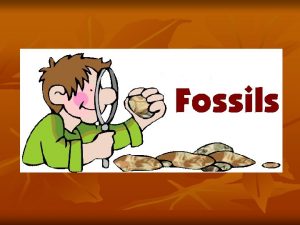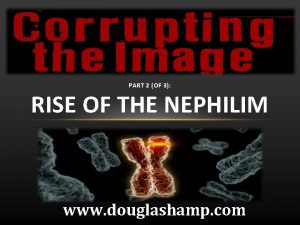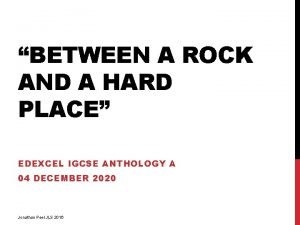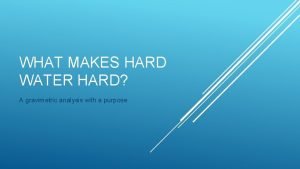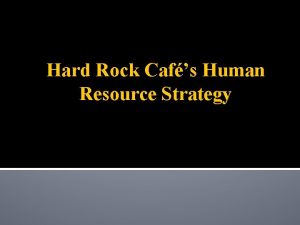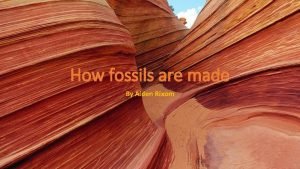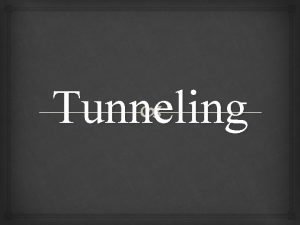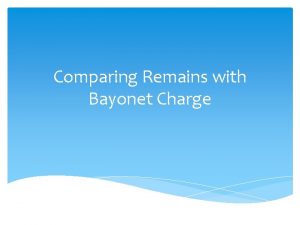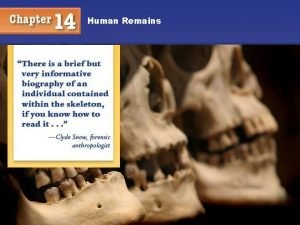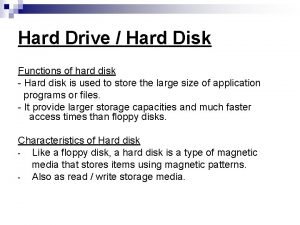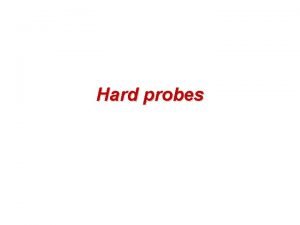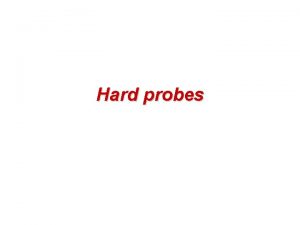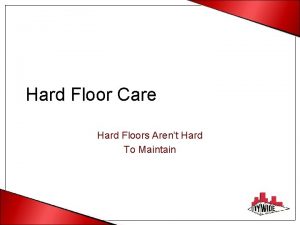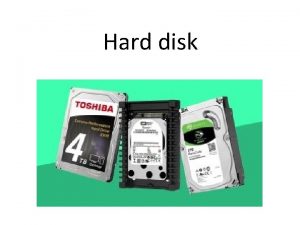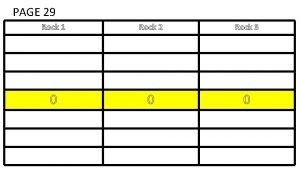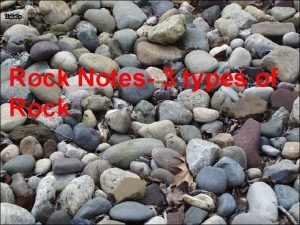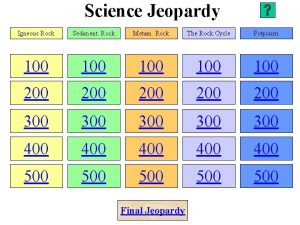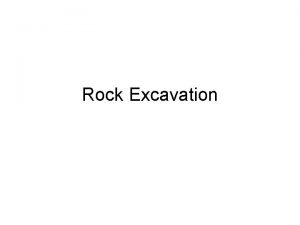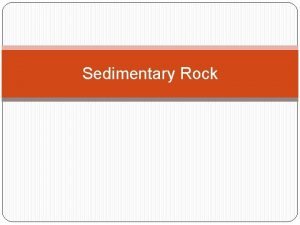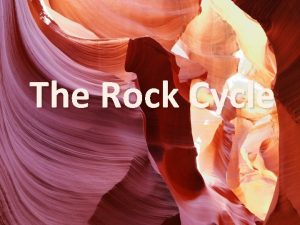Petrified Remains n n n Hard and rock





















- Slides: 21


Petrified Remains n n n Hard and rock like Original material replaced by minerals Ex. bones, wood

Carbonaceous Films n n Burial forces gases and liquid out Forms thin film of carbon residue Outline of organism Ex. plants

Mold & Cast n n n Organism is buried Outside decays leaves a cavity = mold Sediment fills in mold and hardens to rock = cast The cast looks like the organism!

Original Remains n n actual or part of organism trapped in Amber – insects frozen – woolly mammoth tar pits

n What is a tar pit? ? ? Los Angeles La Brea Tar Pits This is a recreation of a tar pit that illustrates how animals would get trapped in tar pits.

Trace Fossils n n n evidence of animal activity tells how organism lives Ex. tracks, worm holes Worm tracks! ↓ These are dinosaur foot prints!!

Index Fossils n n Used to date other fossils and rock layers. Fossils of animals that Existed for a short period of time n Were abundant, there were many of them n Lived all over the world n EUOMPHALUS But wait…. There’s more…. TRILOBITE



Finding Clues to Rock Layers Activity!!! You be the dective!

You be the Detective! n n Fossil clues give geologists a good idea of what life on earth was like millions or even billions of years ago! Problem: How can YOU use fossils and geologic features to interpret the relative ages of rock layers?

1. What “fossil clues” in layers A and B indicate the kind of environment that existed when these rock layers were formed? How did the environment change in layer D? n n Fossils of marine animals in A and B In layer D – Dinosaur tracks and a leaf = land

2. Which layer is the oldest? How do you know? n A is the oldest because the law of Superposition states that the lowest layer is the oldest.

3. Which of the layers formed most recently? How do you know? n Layer G formed most recently because the law of superposition states that the highest layer is the youngest.

4. Why are there no fossils in layers C and E? n Layers C and E are extrusions of igneous rock (igneous rocks do not contain fossils)

5. What kind of fossils occurred in layer F? n Dinosaur, Plant, and bird fossils

Site 2 6. Which layer at Site 1 might have formed at the same time as layer W at Site 2? How do you know? n n Layer B Have the same type of fossils!

7. What clues show an unconformity or gap in the horizontal rock layers? What might have happened to these rock layers? n n Rock layers that are missing from the sequence - Site 2 provide clues of an unconformity. Layers E and D are missing between layers X and Y, which suggests an unconformity. Layer A is also missing, which suggests an unconformity below W. So…Erosion might have occurred because there are missing layers in site 2!

8. Which is older, intrusion V or layer Y? How do you know? n n Layer Y is older An intrusion is always younger that the layers it passes through

9. Working as a geologist, you find a rock containing fossils. What information would you need in order to determine the rock’s age relative to one of the rock layers at Site 1? n You would need to know if any layers at Site 1 contained the same index fossils.
 Petrified remains
Petrified remains Sedimentary rocks turn into metamorphic
Sedimentary rocks turn into metamorphic Cobalt petrified wood location
Cobalt petrified wood location Nephilims
Nephilims Between a rock and a hard place anthology text
Between a rock and a hard place anthology text Edexcel
Edexcel Onomatopoeia hyperbole metaphor
Onomatopoeia hyperbole metaphor Chapter 3 standardized test practice answers
Chapter 3 standardized test practice answers Chapter 3 standardized test practice answers
Chapter 3 standardized test practice answers Gravimetric analysis of calcium and hard water
Gravimetric analysis of calcium and hard water Work hard play hard make history
Work hard play hard make history Hard times hard drive
Hard times hard drive Hard rock cafe maine
Hard rock cafe maine Resource management definition cafs
Resource management definition cafs Hard rock musikalische merkmale
Hard rock musikalische merkmale Hard rock
Hard rock Protective passageway tunnel
Protective passageway tunnel Rock cycle
Rock cycle Igneous metamorphic sedimentary
Igneous metamorphic sedimentary Climbing rock climbing
Climbing rock climbing How do rocks form
How do rocks form Bayonet charge and remains comparison
Bayonet charge and remains comparison
